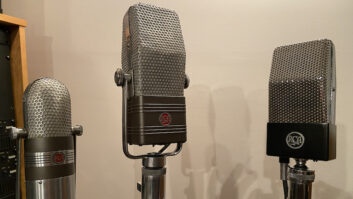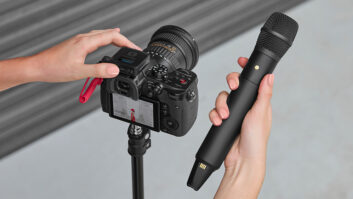Roger Nichols NASHVILLE, TN—After a protracted battle, engineer/producer/innovator Roger Nichols succumbed to pancreatic cancer on April 9, 2011 at age 66. Roger is famously linked to the work of Steely Dan (and the solo works of Dan-mates Donald Fagan and Walter Becker), and to artist John Denver. Roger worked on multiple Grammy winning projects over his career—six for his work with Steely Dan and another for a Denver project— and his discography includes a long list of other artists’ projects. He is the recipient of a Recording Academy Lifetime Achievement Award.

Roger’s audio pursuits date back to high school recordings (including schoolmate Frank Zappa). He studied nuclear physics in college, and worked at a nuclear reactor after graduation (he once quipped to me that they made him leave when he started glowing). A hi-fi store and studio were side businesses post college, and shortly, recording became his full-time pursuit, leading to his being hired by ABC as a technician and recording engineer, which by happenstance led to his recording Fagan and Becker’s songwriting demos in 1971. As much, if not more, than traditional engineering chores, Roger’s role was as the technical facilitator of Fagan and Becker’s perfectionism and passion for quality.
He pioneered drum replacement in recording, creating a pair of digital drum samplers (Wendel, first used on Gaucho, and Wendel II, used on The Nightfly, the latter with a custom digital interface for the early 3M digital 32-track recorders). The painstaking, slow and tedious process used for drum editing on these projects is the stuff of industry legend. Later, he developed the Wendel Jr— a standalone, cartridge-based, triggered drum sample player that found its way into studios worldwide (from personal knowledge, it you listened to any amount of Nashville recordings from the late/mid ’80s through the early ’90s, you’ve heard the Wendel “CStick” cross stick and “Heart Kick-Snare” samples more times than you would ever guess). He earned the nickname, “The Immortal,” by surviving a particularly grueling cluster of parallel sessions that also involved a jolt from improperly grounded gear (the gear suffered more than Roger).
I first met Roger in the early ’90s, just before he moved to Nashville for a few years. During his time in Twang Town, Roger spent a good deal of time at my then-employer, Masterfonics, where he tracked and mixed Roseanne Cash, cut vocals on and mixed John Denver, and mastered Steely Dan projects. We’d sometimes end up in the shop as well, poking at various devices with test gear, and the results provided fodder for some of Roger’s EQ magazine columns. The folklore of Roger and Steely Dan includes, after his discovery that several generations of Steely Dan CDs were made from the wrong masters (Dolby- A encoded, EQ’d for vinyl masters on tape, as opposed to the original Sony 1610 digital masters, which had been lost), a vocal and public campaign that eventually forced the label to fund the retransfer and remastering of the entire catalog, done at Masterfonics by Glenn Meadows with Roger alongside.
Roger was an outspoken and highly visible member of the pro audio community. He had the kind of vibrant personality, perpetual enthusiasm and a ready openness that attracted legions of fans—something accomplished by very few on the engineer’s side of the console. With wit and tenacity, Roger would fearlessly champion quality and good engineering practice, publically embarrassing many manufacturers who cut corners.
Roger will be remembered in many different ways: as a friend, as an inspiration, as a conspirator, as a mentor, as a leader. He’ll be remembered for his contributions to music and technology. For me, it’ll be for asking “Why?” and for tilting windmills, and I’ll always remember Roger as smiling ear-to-ear. Roger’s Facebook page is awash with the memories of others.
You can learn more about Roger’s career at his homepage, rogernichols. com. Roger is survived by his wife, Connie, and two daughters. A fund has been established to help the family recover from the massive expense of Roger’s cancer fight, and you can donate directly from the website.
Roger, now there’s “No Static At All” forever. Godspeed.







